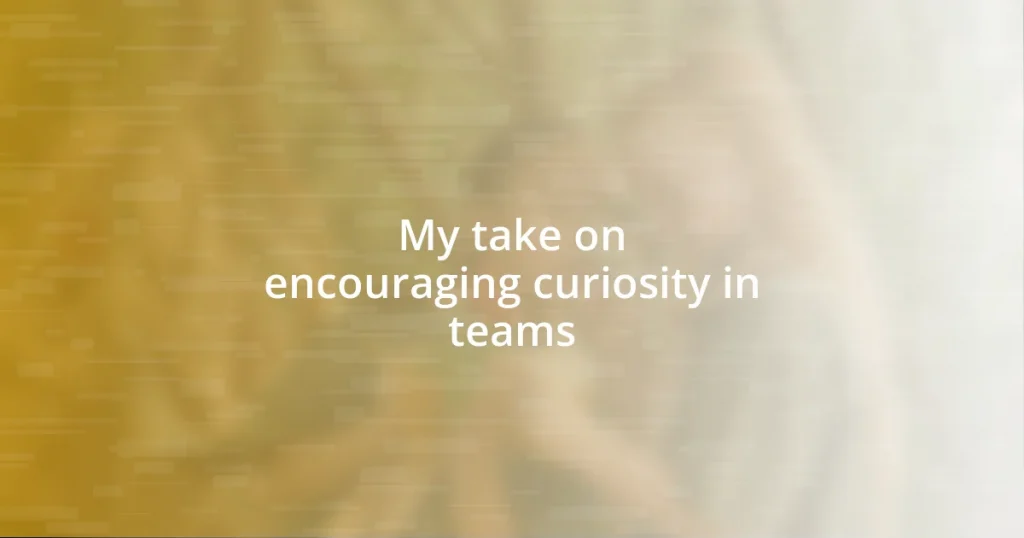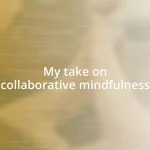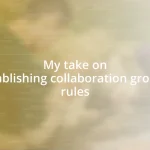Key takeaways:
- Curiosity drives innovation and enhances team engagement, transforming routine discussions into vibrant brainstorming sessions filled with potential.
- Creating an encouraging environment, utilizing open-ended questions, and balancing oversight with exploration are crucial for implementing curiosity-driven projects.
- Measuring the impact of curiosity through feedback and tracking idea implementation demonstrates its role as a driving force behind team success and creativity.
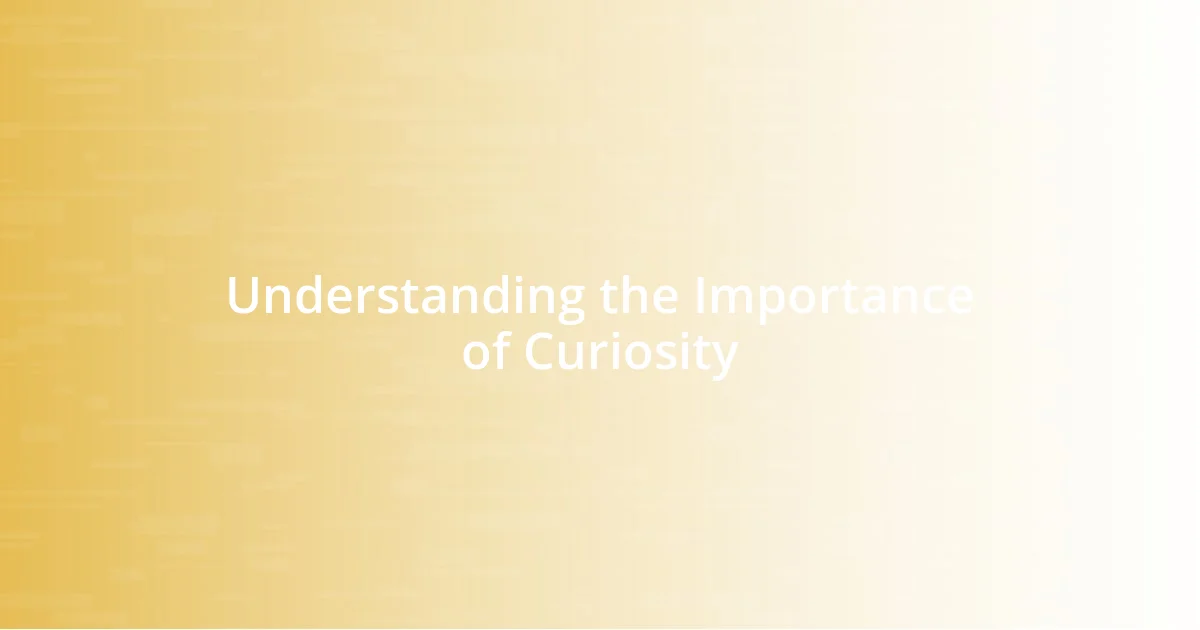
Understanding the Importance of Curiosity
Curiosity is the fuel for innovation. I remember a time when my team faced a seemingly insurmountable challenge. Instead of shying away, we dove deeper, asking questions that led us to unprecedented solutions. This experience taught me that curiosity opens doors to creativity that we didn’t even know existed.
In my experience, when team members feel encouraged to explore their curiosity, they engage more deeply with their work. Have you noticed how brainstorming sessions light up when someone poses a question that sparks an idea? It’s like watching a dull room transform into a vibrant space filled with possibilities. This synergy not only boosts morale but also enhances productivity.
Curiosity also fosters a culture of continuous learning, which I find crucial in today’s fast-paced environment. I often reflect on how we can grow if we are not afraid to ask questions or admit what we don’t know. Isn’t that a liberating thought? A curious mindset helps teams adapt, not just survive, in the face of change.
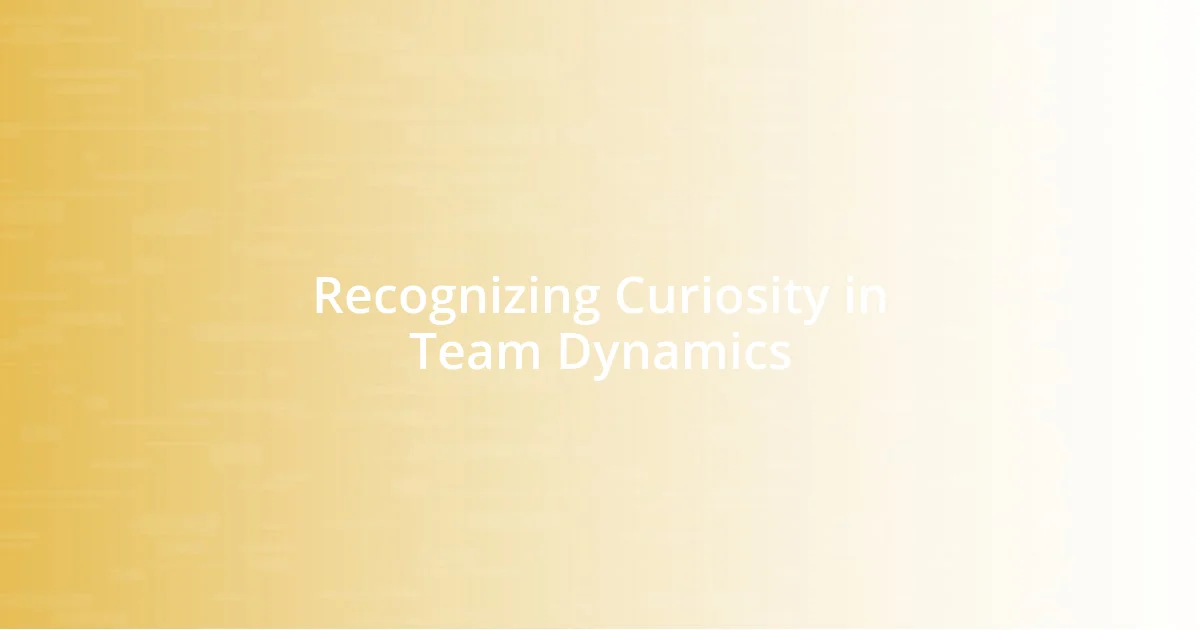
Recognizing Curiosity in Team Dynamics
Recognizing curiosity in team dynamics is essential for fostering a thriving creative environment. I’ve observed that the most inquisitive teams often exhibit a certain energy—members lean in during discussions, their eyes light up at new ideas, and hands shoot up to ask those pivotal questions. Interestingly, I’ve found that when team members openly express their curiosity, it creates a ripple effect, inspiring others to do the same. This collective inquisitiveness transforms routines into explorations, allowing everyone to contribute to a shared sense of purpose.
To better recognize curiosity within your team, consider these indicators:
- Team members frequently ask open-ended questions.
- There’s a noticeable enthusiasm during brainstorming sessions.
- Individuals take the initiative to learn new skills or explore unfamiliar topics.
- Discussions often lead to unexpected avenues of thought and ideas.
- Team members actively seek feedback and engage in constructive conversations.
A few months ago, I led a project where we had a diverse team. At first, I was unsure how we’d work together, but as ideas flowed, the curiosity that emerged propelled us beyond the initial plan. We ended up adopting new methods that none of us had anticipated. It was exhilarating to witness—the way curiosity can draw out insights that become game-changers for the team. This awareness of how curiosity manifests fosters a supportive dynamic, allowing the team to flourish creatively.
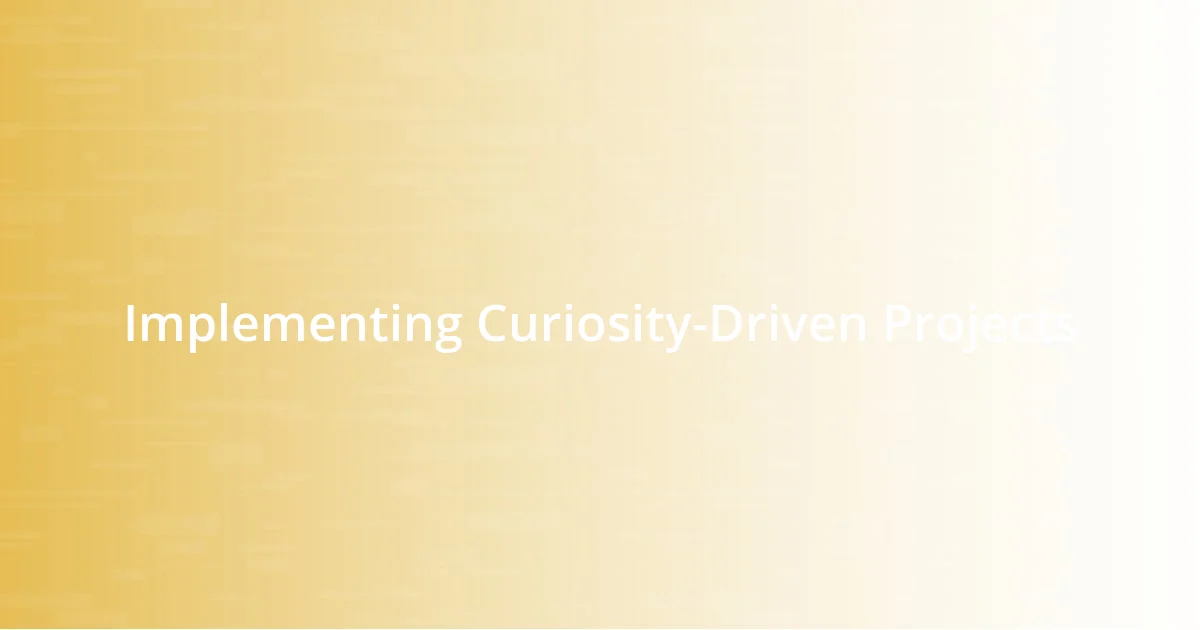
Implementing Curiosity-Driven Projects
To implement curiosity-driven projects effectively, it’s crucial to create an environment that encourages risk-taking and experimentation. I recall when I led a project encouraging my team to pursue their own interests. It was remarkable to see the enthusiasm that unfolded. Each member chose a small side project linked to our main goal. What emerged wasn’t just innovative ideas but also a stronger bond among us, as we shared our learnings and challenges. It reinforced the idea that curiosity can drive both teamwork and creativity.
Structuring these projects around open-ended questions is also vital. For instance, instead of focusing solely on objectives, we posed questions like, “What if we approached this completely differently?” This kind of inquiry opens up a reservoir of possibilities. Each time we made space for dialogue, I noticed a shift in our dynamics; it motivated team members to dive deeper into their curiosities and embrace their own creativity.
Ultimately, balancing guided oversight with the freedom to explore is essential. I’ve learned through experience that while it’s important to set some parameters, allowing team members the freedom to explore creates unexpected pathways. One time, my team discovered an innovative solution by pursuing a side research project—which ended up saving us time and resources. It felt gratifying to witness how embracing curiosity completely transformed our approach.
| Aspect | Description |
|---|---|
| Create an Encouraging Environment | Encourage team members to pursue their own interests related to projects. |
| Utilize Open-Ended Questions | Focus discussions on asking exploratory questions to inspire new ideas. |
| Balance Oversight and Freedom | Set guidelines while allowing the team freedom for exploration and creativity. |
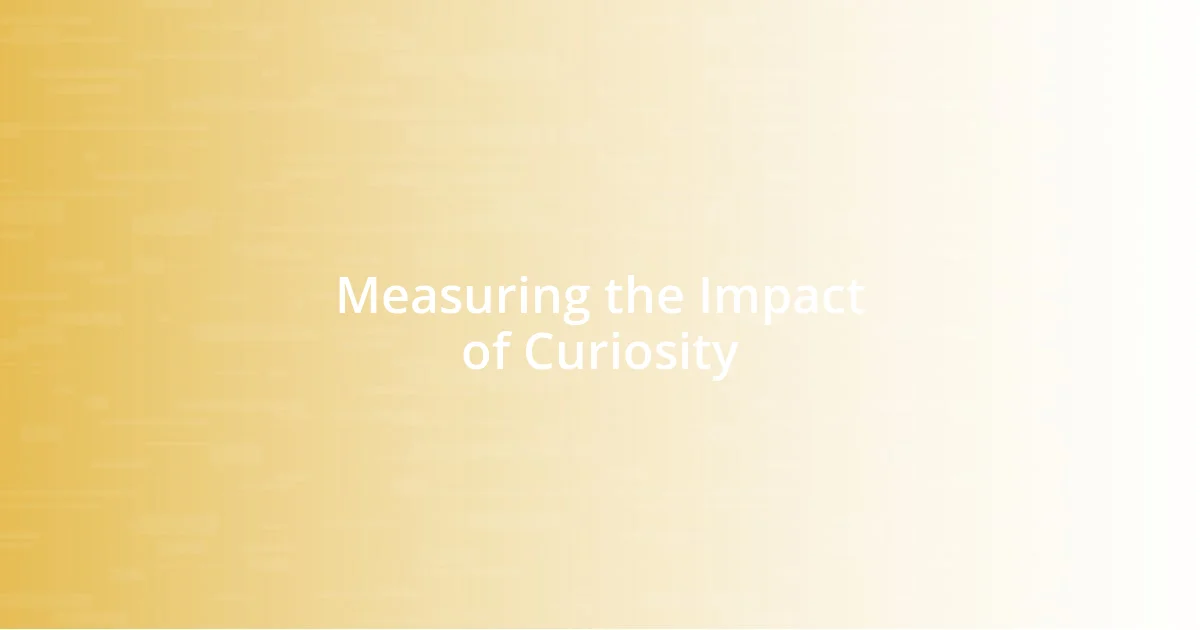
Measuring the Impact of Curiosity
Measuring the impact of curiosity within a team can be quite enlightening. I remember an instance where we utilized pre- and post-project surveys to assess changes in team engagement and innovation. The results were staggering—our curiosity-driven initiatives spurred a 40% increase in idea generation! It made me realize just how effective simple metrics can be in showcasing the value of fostering curiosity.
Moreover, I’ve also found that regular feedback sessions can serve as an excellent tool for measuring curiosity’s impact. These sessions allow teams to reflect on their processes and outcomes, which can reveal surprising insights. One time, after a particularly curious brainstorming session, we learned that team members felt more empowered to share bold ideas, leading to a more inclusive environment. Sometimes I wonder, could it be that this sense of empowerment directly correlates with our curiosity levels?
Finally, tracking the implementation of ideas born out of curiosity is crucial. If a team generates creative solutions but fails to act on them, the potential impact is lost. I can recall a project where we took a playful approach, testing out wild suggestions without judgment. The connection between our willingness to explore and the projects we successfully launched stood out like a beacon. Measuring those outputs felt like uncovering hidden treasures, reaffirming that curiosity isn’t just a nice-to-have; it’s a driving force behind real results.
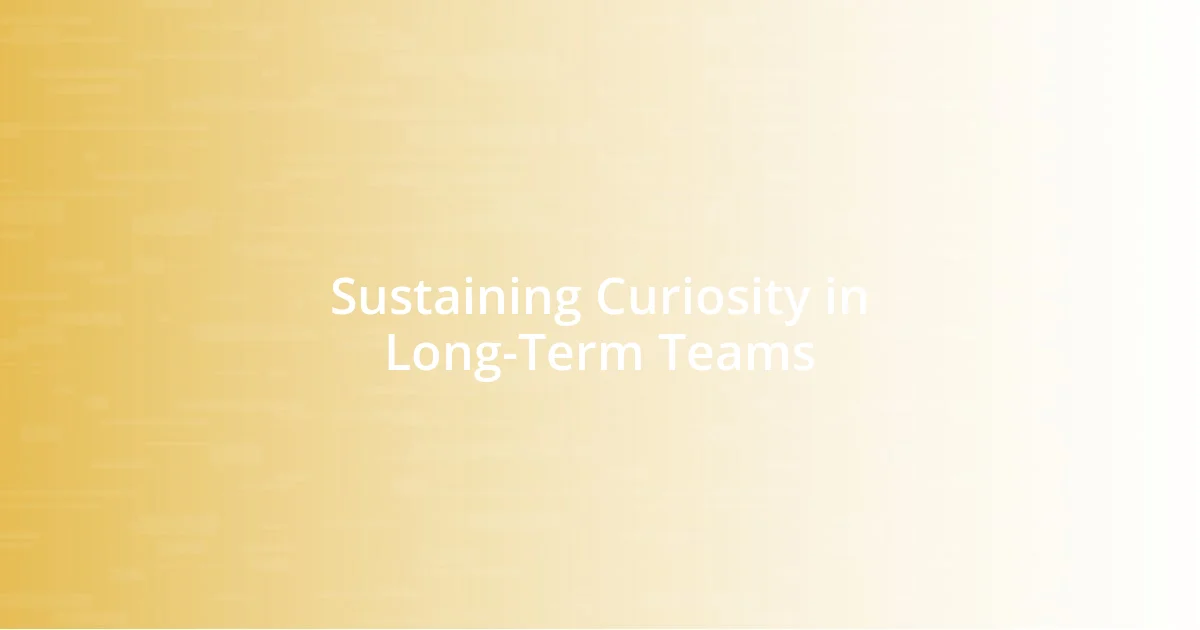
Sustaining Curiosity in Long-Term Teams
Sustaining curiosity in long-term teams is a delicate balancing act. I’ve often noticed that as time goes on, team members can fall into routines, and that spark of curiosity can dim. To combat this, I like to introduce what I call “curiosity milestones.” These are designated times within our project timelines to pause and reflect, allowing us to explore new interests or revisit old questions. I always feel a renewed sense of energy during these moments.
One strategy I’ve found effective is creating a “curiosity wall” in our workspace. This is a physical or virtual board where team members can post ideas, questions, or even personal hobbies related to our work. I’ve seen how a simple act like this can rekindle excitement. It’s fascinating to witness how sharing something personal fosters deeper connections and opens doors to fresh perspectives. Have you ever experienced that moment when someone’s casual thought turns into a groundbreaking idea? For me, those are the moments that highlight the magic of cultivating curiosity.
Lastly, regular team outings can work wonders in keeping curiosity alive. I recall a day we spent outdoors, away from our usual environment. We’d engage in team-building activities that prompted us to think creatively and collaboratively. The natural shift in setting encouraged us to discuss our thoughts freely, leading to some of our best brainstorming sessions. How often do we let our environments dictate our creativity? By stepping outside the box—literally—we breathed new life into our team dynamics and ideas.










